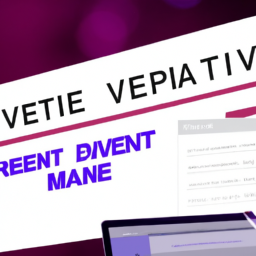Unlock Big Potential with an Event Website Learn How to Create One
Create An Event Website
Creating an Event Website Plan
Organizing an event online is no easy feat. It requires strategic planning and thought. Before launching a website, there are a few vital components that must be taken into consideration for a successful event. In this article, we'll aim to establish a holistic introduction to constructing an effective event website.
Step 1: Develop a Well-Rounded Strategy
Before getting started with the website layout, it is important to map out your goals, timeline, and deliverables. Set a strategy and plan by clearly identifying your target audience, objectives, budget, and timeline. After understanding your visitors and what you wish to promote or advertise with your website, it is time to create the structure.
Step 2: Arrange a Framework and Design
Once you have a thorough plan of action in place, build the website framework and design. Start by structuring the content into separate topics to be broken down and organized. Select a niche theme, colors, and visual elements that align with your goal. Follow up by creating an aesthetically pleasing layout, making sure to grab and hold your user's attention with colorful visuals and engaging online features.
Step 3: Include an Easy-to-Use Checkout System
Include an intuitive checkout experience, free from distractions or delays. Make sure processes are quick and secure, as customers will likely not tolerate a website that could compromise this. Strive for efficiency and processing speed, providing customers with the convenience of an easy checkout system.
Step 4: Insert Engaging Content
Include informative and engaging content to attract readers. Try to establish a connection with the consumers through various medias, such as videos, images, and text. Create custom content tailored to their interests. Additionally, allow for feedback and reviews, allowing customers to help create an engaging and interactive online environment.
Step 5: Optimize for Search Engines
Be sure to optimize your website for search engines to increase visibility and reach. Use descriptive titles, headings, and meta tags to tell search engines your website's relevance related to certain topics. Leverage accessibly data like alt tags and optimize for page loading speed.
Step 6: Invest in Quality Maintenance
Be sure to invest in regular website maintenance in order to provide customers with a breezy, hassle-free online experience. Check for broken links or dead images, as well as compatibility with different platforms and devices. Ensure good performance, uptime, and page loading speeds.
In Summary
Creating an event website requires both strategy and design. Start by developing a plan of action, designing a structure for great user experience, incorporating an easy checkout system, inserting engaging content, and optimizing for search engines. Finally, invest in regular website maintenance to offer customers a hassle-free online experience. By following these steps, you can set up and launch an effective and successful event website.

